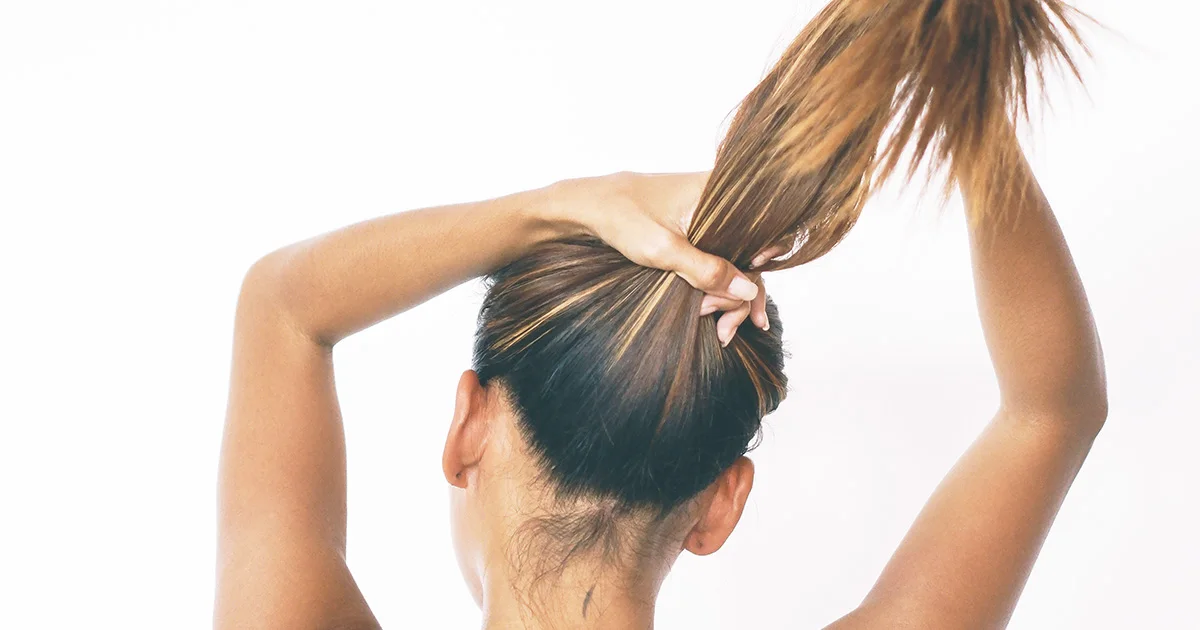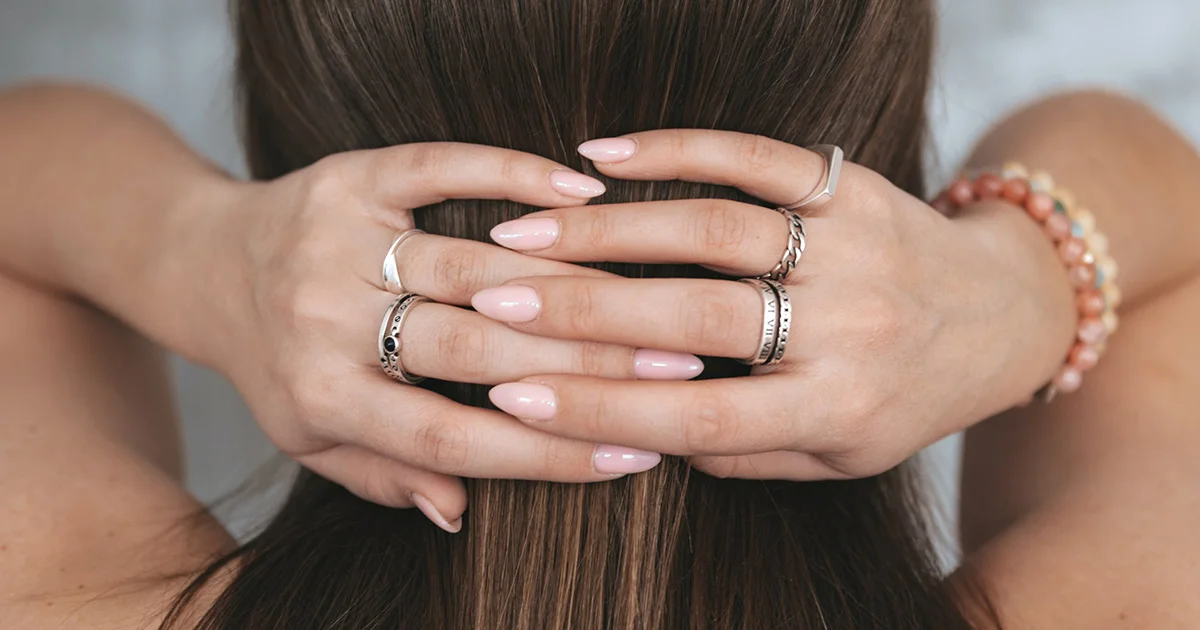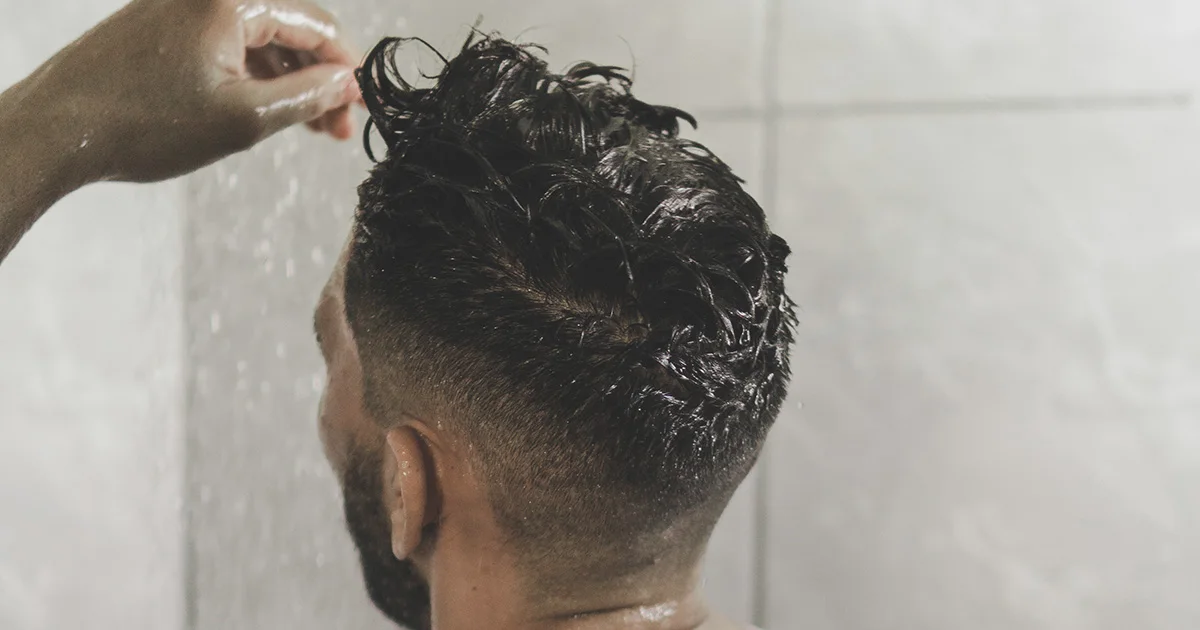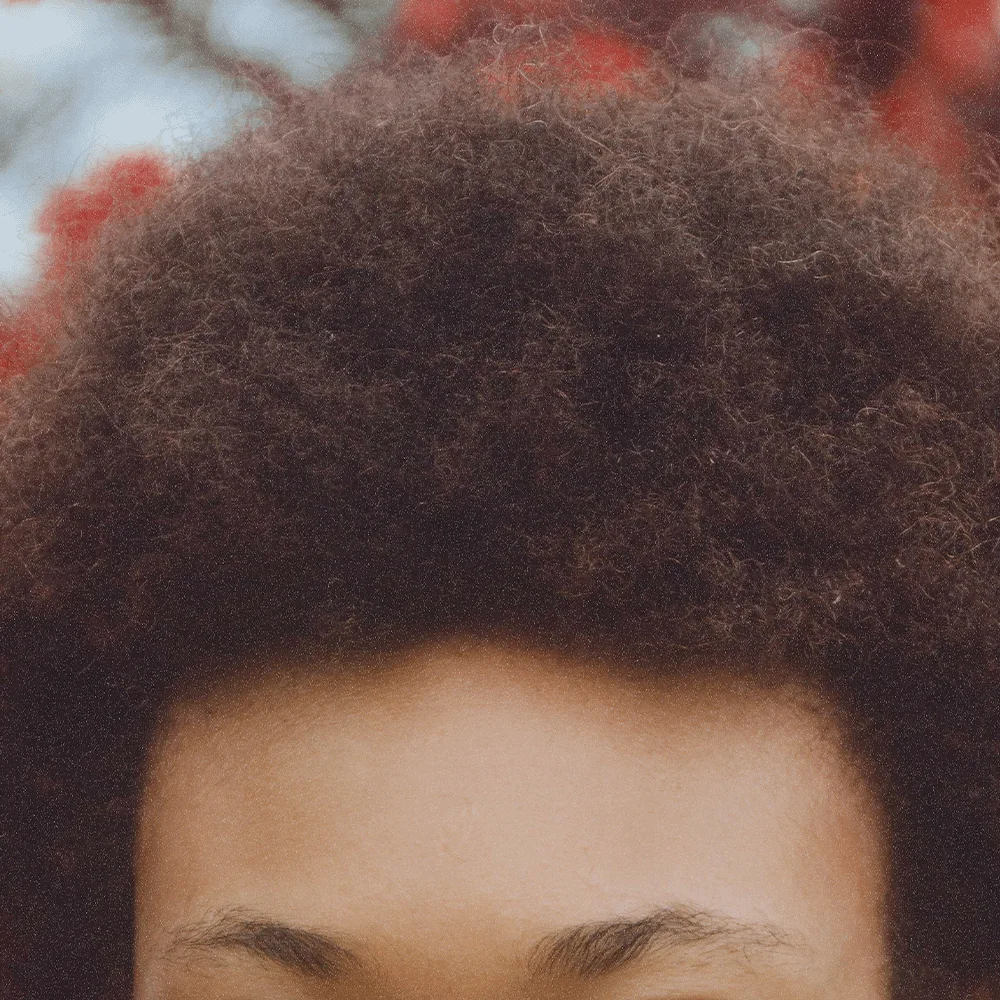Here's what we'll cover
Here's what we'll cover
Thinning hair and hair loss—otherwise known as male pattern baldness or female pattern baldness—is very common. Nearly 50% of men and women experience some hair loss by age 50. Many people take hair loss in stride, but if it bothers you, there are things you can do to slow or stop it (Ho, 2021).
How to stop thinning hair
When you notice hair loss, it's usually caused by androgenic alopecia (better known as male or female pattern hair loss). Androgens are considered male hormones, as they contribute to typical male characteristics, such as body hair and a deeper voice. The androgen dihydrotestosterone (DHT) is believed to cause hair follicles to get smaller and smaller until they stop producing hair at all.
If you notice male pattern hair loss or female pattern hair loss, there are several strategies you can use to treat thinning hair. Hair loss treatments include:
Minoxidil (brand name Rogaine), a liquid or foam rubbed onto the scalp twice a day, can slow hair loss and encourage new hair to grow. However, if you stop using these topical treatments, you’ll start losing hair again (Badri, 2021).
Finasteride (brand name Propecia), an oral medication, helps prevent shrinking hair follicles and can slow further hair loss; this effect disappears if you stop using it (Zito, 2022).
Low-level laser light therapy (LLLT) is an FDA-cleared way to treat hair loss that may reduce inflammation and increase blood flow to the hair follicles (Egger, 2020).
DHT-blocking shampoos claim to block DHT’s effect on follicles; they’re considered less effective than minoxidil or finasteride. Some also contain ketoconazole (the active ingredient in the Nizoral), which can disrupt DHT’s damaging effects on hair follicles when combined with other treatments like finasteride (Fields, 2020).
PRP (platelet-rich plasma) treatments involve taking plasma extracted from your blood and injecting it into the scalp. The theory is that the growth factors in the plasma can spur hair growth (Gupta, 2019).

Oral Minoxidil Important Safety Information: Read more about serious warnings and safety info.
Finasteride Important Safety Information: Read more about serious warnings and safety info.
How to tell if your hair is thinning
Everyone loses about 100 hairs a day. That’s part of the natural hair life cycle—the hair follicles on our scalps are continuously growing and shedding hair. So, discovering a few hairs in your comb, on your pillow, or in the shower drain isn’t necessarily a sign that you’re going bald. But over time, if you notice your hair falling out more and more, it could mean that you’re experiencing androgenetic alopecia or another type of hair loss.
Hair loss can happen in several ways:
Receding hairline: Hair might thin across the hairline or at the temples, creating an M-shaped hairline.
Loss of hair at the crown (back top) of the head
Overall hair thinning: This is sometimes called “invisible balding” because the gradual thinning is so balanced it may be hard to notice until nearly half the hair is lost.
Complete baldness: When this happens, you’ll know it just by looking in the mirror. Unfortunately, it might not be reversible once you’ve lost this much hair. Early treatment is your best bet if possible.
A good way to judge whether your hair is thinning is to take a picture of yourself and compare it to past photos taken in similar lighting. Does your hairline or overall head of hair look sparser? Is there noticeable hair loss from past pictures?
Why is my hair thinning?
The most common cause of hair loss in women and men is androgenic alopecia. However, there are other reasons your hair may be thinning, including (Phillips, 2017):
Breakage of the hair shaft: This type of hair loss is called traction alopecia, and it comes from damage to hair from styling, harsh chemicals in hair products, or tight hairstyles that can cause the hair shaft to break off.
Alopecia areata: This is an autoimmune condition where inflammation destroys the hair follicle, causing patchy hair loss. In extreme cases, you can lose hair throughout your body.
Stress or an emotional shock (telogen effluvium): Some people experience a general thinning of hair several months after a physical or emotional shock; fortunately, this is usually temporary hair loss.
Medications: Hair shedding can also be a side effect of certain drugs, such as those used for cancer, acne, seizures, thyroid problems, and blood pressure, among others.
If you’re unsure about what’s causing your thinning hair, consult a dermatologist, who can evaluate what’s going on and recommend hair loss treatment if necessary.
DISCLAIMER
If you have any medical questions or concerns, please talk to your healthcare provider. The articles on Health Guide are underpinned by peer-reviewed research and information drawn from medical societies and governmental agencies. However, they are not a substitute for professional medical advice, diagnosis, or treatment.
Badri, T., Nessel, T. A., & Kumar, D. D. (2021). Minoxidil. StatPearls . Retrieved on Mar. 30, 2022 from https://www.ncbi.nlm.nih.gov/books/NBK482378/
Egger, A., Resnik, S. R., Aickara, D., et al. (2020). Examining the safety and efficacy of low-level laser therapy for male and female pattern hair loss: a review of the literature. Skin Appendage Disorders , 6 (5), 259–267. doi:10.1159/000509001. Retrieved from https://pubmed.ncbi.nlm.nih.gov/33088809/
Fields, J. R., Vonu, P. M., Monir, R. L., et al. (2020). Topical ketoconazole for the treatment of androgenetic alopecia: a systematic review. Dermatologic Therapy , 33 (1), e13202. doi:10.1111/dth.13202. Retrieved from https://pubmed.ncbi.nlm.nih.gov/31858672/
Gupta, A. K., Cole, J., Deutsch, D. P., et al. (2019). Platelet-rich plasma as a treatment for androgenetic alopecia. Dermatologic Surgery: Official Publication for American Society for Dermatologic Surgery , 45 (10), 1262–1273. doi:10.1097/DSS.0000000000001894. Retrieved from https://pubmed.ncbi.nlm.nih.gov/30882509/
Ho, C. H., Sood, T., & Zito, P. M. (2021). Androgenetic alopecia. StatPearls . Retrieved on Mar. 30, 2022 from https://www.ncbi.nlm.nih.gov/books/NBK430924/
Murphrey, M. B., Agarwal, S., & Zito, P. M. (2021) Anatomy, hair. StatPearls . Retrieved on Mar. 30, 2022 from https://www.ncbi.nlm.nih.gov/books/NBK513312/ .
Phillips, T. G., Slomiany, W. P., & Allison, R. (2017). Hair loss: common causes and treatment. American Family Physician , 96 (6), 371–378. Retrieved from https://pubmed.ncbi.nlm.nih.gov/28925637/
Zito, P. M., Bistas, K. G., & Syed, K. (2022). Finasteride. StatPearls . Retrieved on Mar. 30, 2022 from https://www.ncbi.nlm.nih.gov/books/NBK513329/










